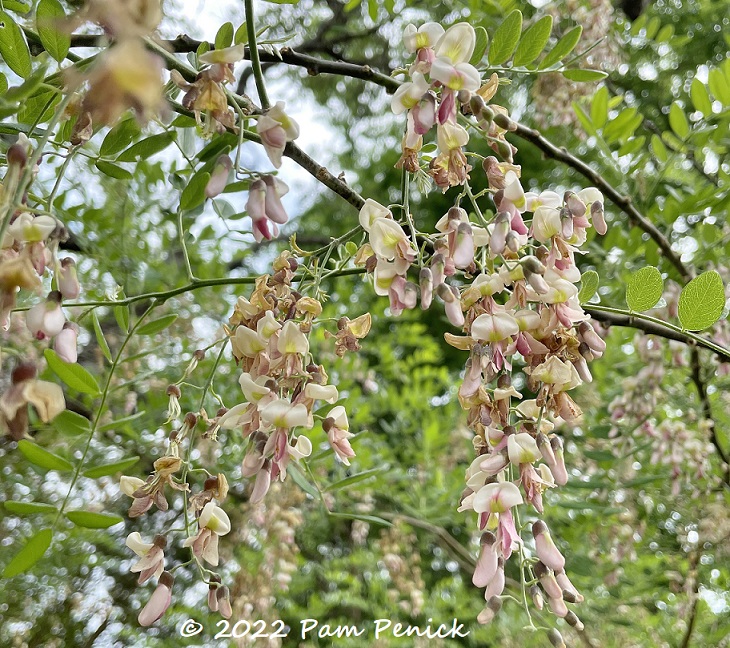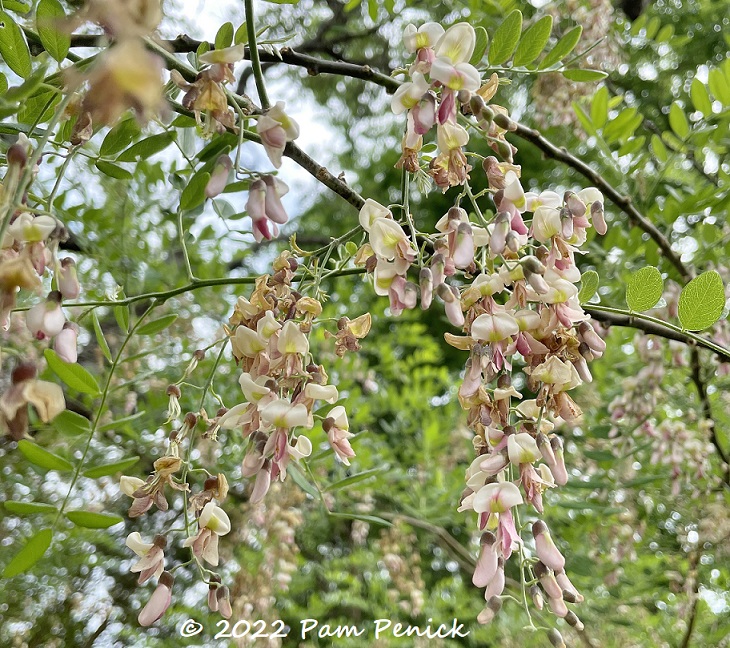
Eve’s necklace may not be widely known among gardeners. But bees and other nectaring insects sure know it and love it. Formerly called Sophora affinis, now Styphnolobium affine, this small deciduous tree with lacy foliage occurs naturally in well-drained limestone (i.e., alkaline) soils in North and Central Texas, as well as in Oklahoma, Arkansas, and Louisiana.
Cascading clusters of pink-and-ivory blossoms appear in late March or early April, attracting a contingent of bumblebees, honeybees, and the occasional wasp. By the time I took these photos in mid-April, the flowers were fading to a pinky beige reminiscent of Farrow & Ball’s Setting Plaster. Grandmacore, anyone?
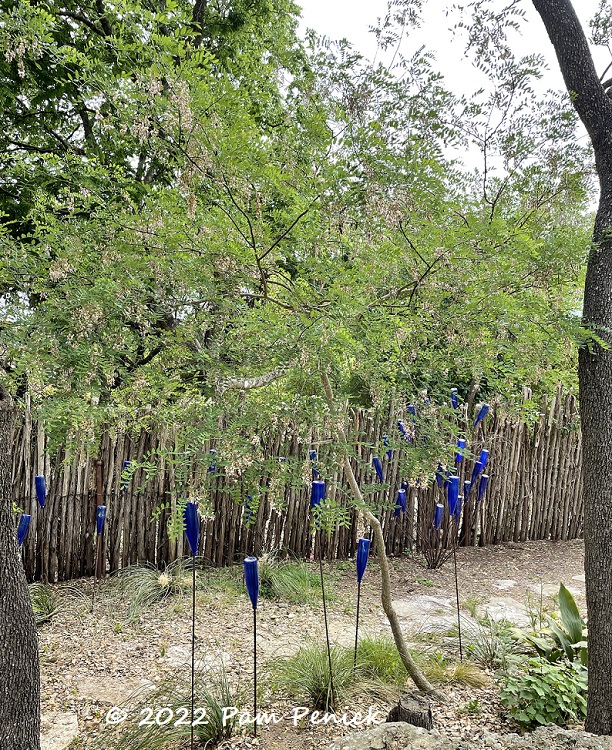
My tree grows under live oaks and still flowers prolifically. However, its canopy is loose, almost rambling, in the shade. In full sun, Eve’s necklace fills out into a full, rounded canopy. Dave Creech, director of the SFA Gardens at Stephen F. Austin State University in Nacogdoches, recommends Eve’s necklace as a substitute for crape myrtle in the Deep South, where our beloved crapes are being decimated by newly introduced crape myrtle bark scale. He’s also developing a cultivar called ‘Amy’ with darker, more richly colored flowers.
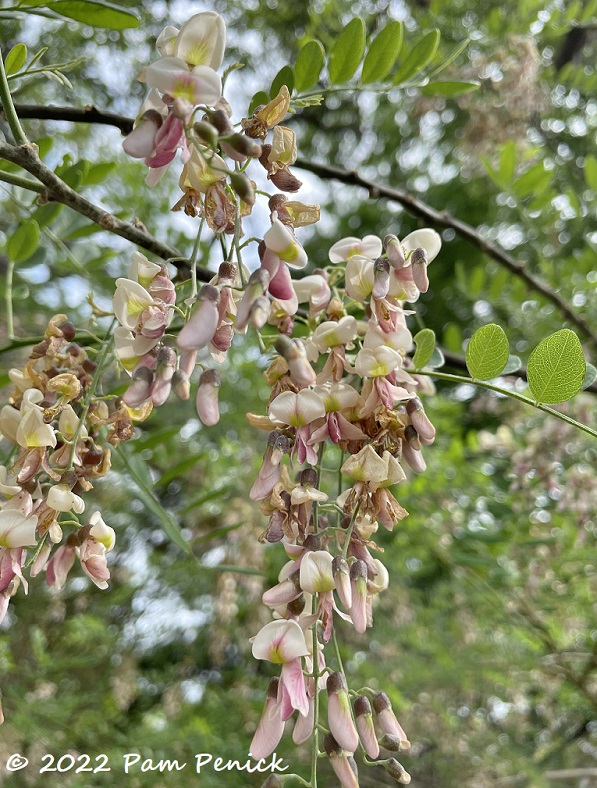
Beneath the pendant blossoms, it’s fun to watch the eager pollinators. I stood here one day and watched a large bee zipping from flower to flower. Unfortunately I wasn’t able to get a good photo, so you’ll just have to imagine it.
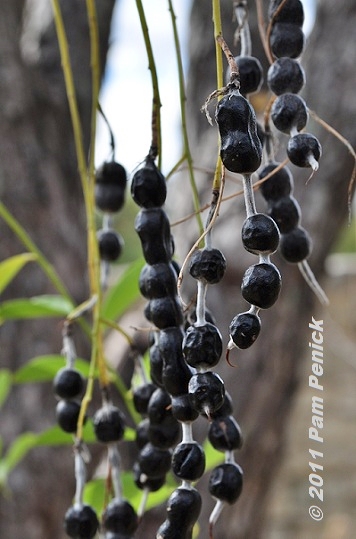
After the flowers fade, distinctive black seedpods form along the stems. These beaded strands give Eve’s necklace its common name. As with its cousin Texas mountain laurel, the seeds are poisonous, so no grazing.
Once established, Eve’s necklace needs no supplemental irrigation. It grows in sun or shade to a height of 15 to 30 feet and is hardy to Zone 7. It’s time to acknowledge Eve’s necklace is a tree worth knowing.
Note: My Plant This posts are written primarily for gardeners in Central Texas. The plants I recommend are ones I’ve grown myself and have direct experience with. Check online forums for your region or local independent nurseries to see if a particular plant might work in your area.
I welcome your comments. Please scroll to the end of this post to leave one. If you’re reading in an email, click here to visit Digging and find the comment box at the end of each post. And hey, did someone forward this email to you, and you want to subscribe? Click here to get Digging delivered directly to your inbox!
__________________________
Digging Deeper
Love ponds? Attend the ZENsational Pond Tour June 4-5, organized by Austin Pond Society. North Austin ponds are on tour June 4th, South Austin ponds on June 5th. One ticket gets you into both days. Early registration is $25 until May 31. Or register at any pond on May 4 or 5 for $30.
Join the mailing list for Garden Spark! Hungry to learn about garden design from the experts? I’m hosting a series of talks by inspiring designers, landscape architects, and authors a few times a year in Austin. These are limited-attendance events that sell out quickly, so join the Garden Spark email list to be notified in advance. Simply click this link and ask to be added. The 6th season kicks off in fall 2022.
All material © 2022 by Pam Penick for Digging. Unauthorized reproduction prohibited.
The post Plant This: Eve’s necklace for spring flowers that bees love appeared first on Digging.

